By Johnny Updated: Jun 5, 2024
This guide will help you understand LED Floodlights from the following 10 chapters:
Chapter 1: What are LED Floodlights?
Chapter 2: Main Components of LED Floodlights.
Chapter 3: Advantages of LED Floodlights.
Chapter 4: LED Spotlight VS LED Floodlights.
Chapter 5: Applications of LED Floodlights.
Chapter 6: Key Factors in Choosing LED Floodlights.
Chapter 7: Installation and wiring of LED Floodlights.
Chapter 8: Case Study.
Chapter 9: Reapway LED Floodlight Recommendations.
Chapter 10: Conclusion.
It is high-intensity, broad-beam lights that use LEDs as light source. Designed to illuminate large areas,
these lights commonly used in outdoor settings such as sports fields, parking lots, and building facades.
They offer superior illumination, energy efficiency, and durability compared to traditional lighting.

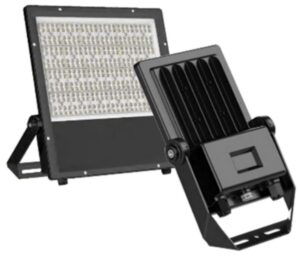
LED Chips: The core component that emits light. High-quality LED chips ensure better brightness and longevity.
Driver: Converts electrical power to the appropriate voltage and current needed by the LED chips, ensuring
stable and efficient operation.
Heatsink: Manages heat dissipation to maintain optimal operating temperatures, thereby extending the lifespan
of the flood light.
Lens and Reflector: Directs and diffuses the light to achieve the desired beam angle and intensity.
Housing: Provides structural support and protection from environmental factors such as dust and water.
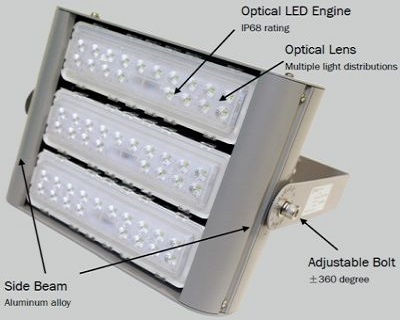
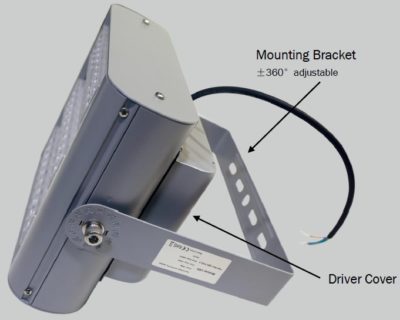
High Energy Efficiency: LED flood lights consume significantly less power than conventional lights.
They convert most of the electricity into light, minimizing energy waste and reducing electricity bills.
Long Lifespan: LEDs have a much longer operational life, often exceeding 50,000 hours. This longevity
reduces the frequency of replacements, making them a cost-effective lighting solution in the long run.
Low Maintenance Cost: Due to their durability and long lifespan, LED flood lights require less frequent
maintenance and replacements. This translates to lower maintenance costs and reduced downtime
for businesses.
Environmentally Friendly: LEDs are free of toxic chemicals and can be recycled, reducing environmental impact.
Better Lighting Performance: LED floodlight provide a very uniform distributed light pattern. Besides,
LEDs are available in a range of color temperatures.
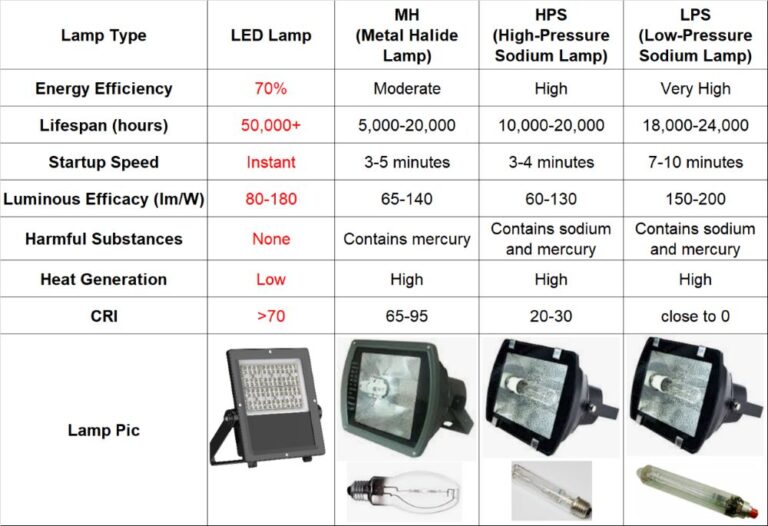
Definitions: Spotlights are designed to emit a concentrated beam of light that highlights specific areas
or objects, while floodlights provide a broad, diffuse beam that illuminates larger areas.
Key Differences: The main difference lies in their beam angles and beam width. Spotlights have narrow
beam angles, making them ideal for focused lighting applications. In contrast, floodlights have wide
beam angles, suitable for general area illumination.
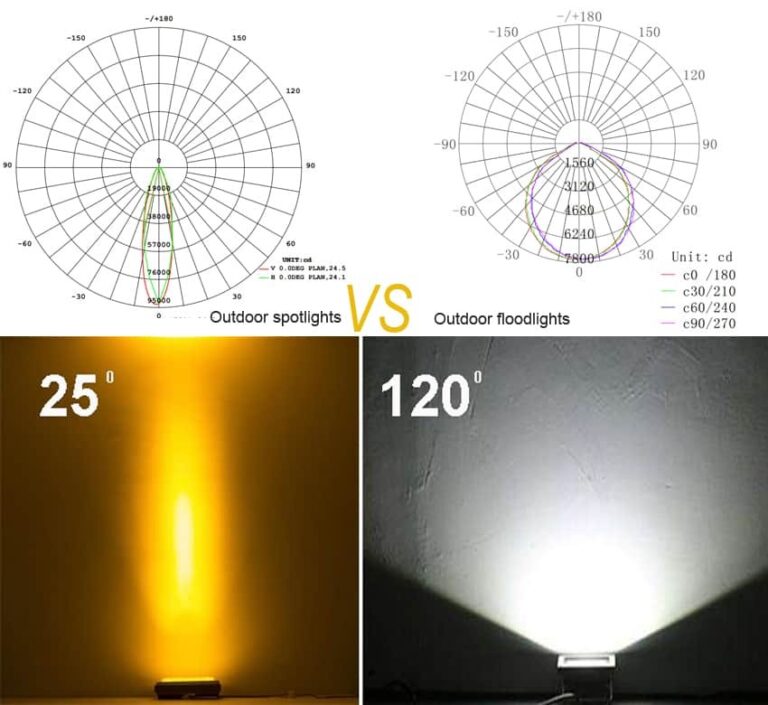
Beam width
To know how wide light’s beam will be from a certain distance away, there’s a
simple formula that can help you figure this out: Beam angle x 0.018 x Distance from Light = Beam width.
So, if you have a 90 degree 100W floodlight, and want to know how wide the beam will be from 10 feet away,
just do the math: 90 degrees x 0.018 x 10 feet = 16.2 feet wide=4.89 meters wide
Comparison of Suitable Scenarios: Spotlights are perfect for highlighting architectural features, artworks,
or stage performances. Floodlights are better suited for outdoor areas like parking lots, sports fields, and
security perimeters where wide-area coverage is needed.
Power range: Floodlights are normally with a higher wattage than spotlights. Below is the common
wattage for floodlight and spotlight.

Industrial Lighting: used in warehouses, factories, and construction sites to provide bright and consistent
illumination, improving safety and productivity.
Commercial Building Lighting: They enhance the aesthetic appeal and security of commercial buildings, illuminating facades, parking areas, and entrances.
Sports Venue Lighting: LED floodlights ensure uniform lighting in sports arenas, facilitating clear visibility for players and spectators.
Landscape Lighting: used to highlight gardens, pathways, and architectural features in landscapes, enhancing visual
appeal and security.
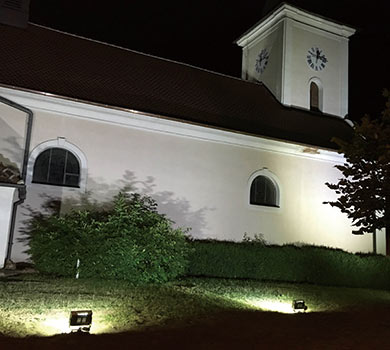
1.Brightness (Lumens)
Lumens VS Wattage: Lumens measure the brightness of the light, while wattage measures energy consumption.
Choose a floodlight based on lumens to ensure it provides the desired level of brightness.
Application Needs: Higher lumens are suitable for larger, more open spaces, while lower lumens may be adequate
for smaller areas or accent lighting.
Below table for LED floodlight equivalent to Metal Halide Lamp and High-Pressure Sodium Lamp:
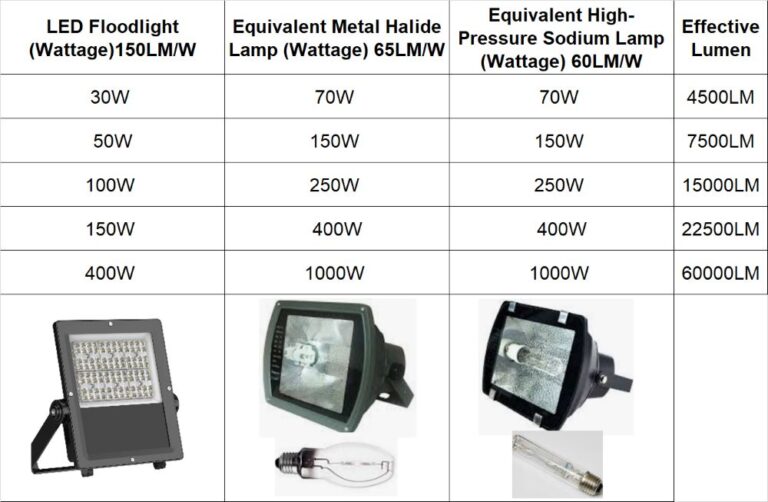
2.Beam Angle
Wide vs Narrow Beam: beam angle determines how light is distributed. Wider angles (e.g., 90° to 120°) cover
larger areas like parking lots, sports fields, or wide-open spaces, while narrower angles (e.g., 10° to 40°) focus
light on specific spots like walkways, signage, or architectural features.
Height of Installation: Consider the height at which the floodlight will be installed.
High-Mounted Floodlights: If the floodlight is installed at a higher position (eg, on tall poles or building facades),
a narrower beam angle may be necessary to ensure the light reaches the ground effectively without excessive
spreading.
Low-Mounted Floodlights: For floodlights installed closer to the ground, a wider beam angle can help distribute
the light more evenly across the surface.
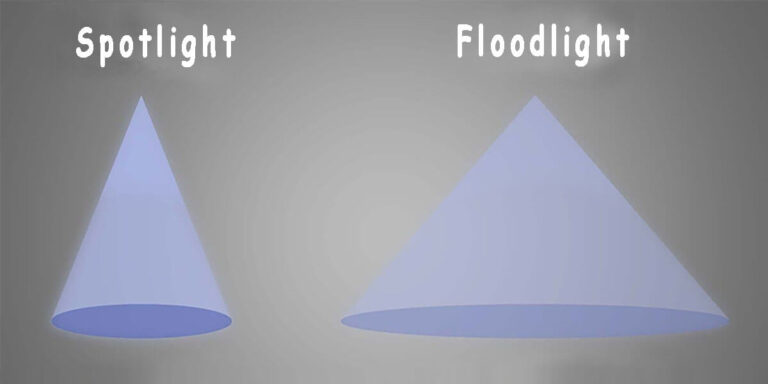
3. Color Temperature(CCT)
3000K – warm white.
4000K – natural, good for office or other areas of work.
5000K – pure white, good for large spaces.
6000K – cool white.

4.IP Rating (Ingress Protection)
Outdoor VS Indoor Use: The IP rating indicates the level of protection against dust and water.
For outdoor installations, an IP65 or higher rating is recommended to withstand rain and dust.
Indoor floodlights can have lower IP ratings.
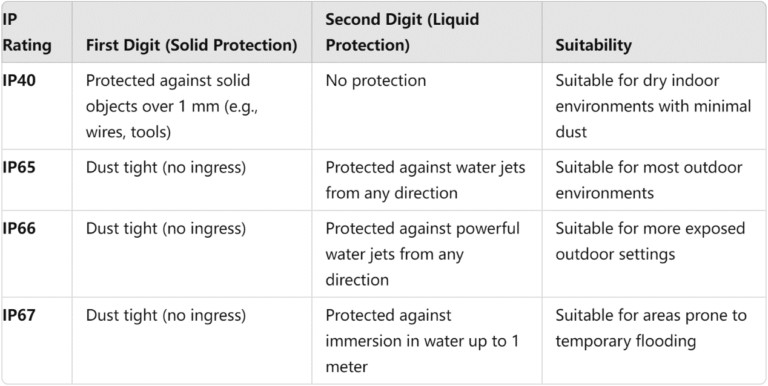
5.Durability and Material Quality
Housing Material: Look for floodlights made from durable materials like aluminum, which offer good
heat dissipation and corrosion resistance.
LED: Choose the LEDs with low light attenuation and good color consistency.
Driver: it involves several important factors to ensure compatibility, efficiency, and longevity of the lighting system.
Here’s a guide to help you select the appropriate driver:
1) Determine the Power Requirements:
2) Consider the Environment:
3) Efficiency and Power Factor:
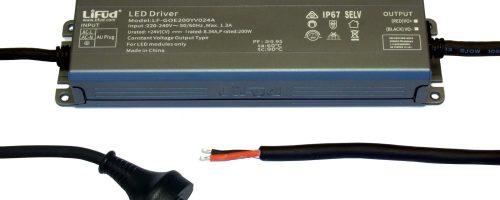
4) Choose well-known brands:
Choosing a reputable brand can reduce the risk of failure and ensure consistent performance over time.
a: Ease of Integration: Drivers from well-known brands may offer better integration with other lighting
control systems, such as dimming controllers, smart home systems, or sensors.
b: Better Customer Support and Warranty:
A reputable brand is more likely to offer strong customer support, including technical assistance and
troubleshooting help.
Top brands usually offer longer and more comprehensive warranties, which provide peace of mind
and potential cost savings if the driver fails prematurely.
c: Safety and Certification:
Choose drivers that are certified by recognized standards (e.g., UL, CE, RoHS) to ensure safety and quality.
d: Size and Mounting:
Ensure the driver’s physical size and mounting options are compatible with your installation space
and requirements.
5) Installation and Adjustability
Mounting Options: Consider whether the floodlight comes with flexible mounting options
(e.g., wall, ground, or pole mounts) that suit your installation needs.
Adjustable Angle: Some floodlights have adjustable brackets, allowing you to direct the light precisely where needed.
6) Control Options
Smart Controls: Some LED floodlights come with smart features, such as remote control, motion sensors,
or integration with smart home systems.
Dimming Capabilities: If dimmable lighting is required, ensure the floodlight is compatible with dimming systems.
7) Cost and Budget
Initial Cost vs Long-Term Savings: Balance the upfront cost with potential energy savings and maintenance
costs over time.
LED floodlights are most commonly fixed on walls, floors or other structures through adjustable brackets.
The illumination angle can be adjusted. Floodlights can also be hung in higher locations, such as tennis court
ighting, by mounting to a tall pole via brackets.
Steps for bracket mounting:
1: Fasten the bracket to the wall with screws
1) Make a punch mark on the surface to be installed.

2) Select appropriate drill bit, punch a hole with the impact drill, and knock the expansion screw into the hole first.
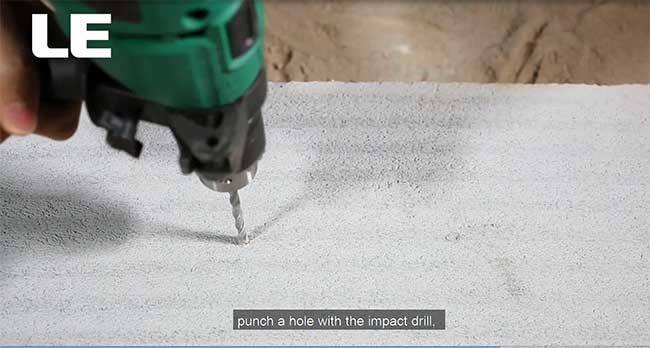
3) when used expansion bolt, align the bracket mounting hole with the bolt and tighten the nut with an open end wrench.
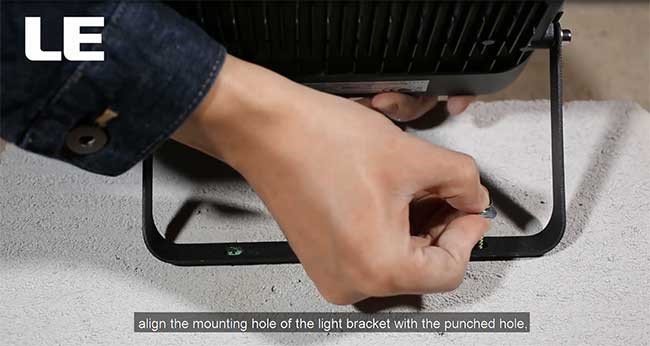
Step for connecting wires
1) Cut off the power
To start with, please turn off the main power for safety reasons.
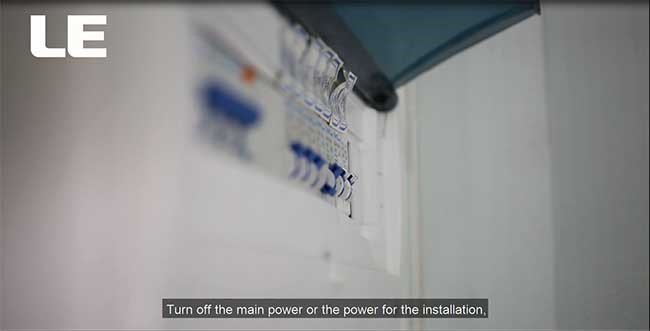
2) Connect the wires
After fixing the light components, connect the wires according to the mark of the fire wire, the zero wire,
and the ground wire.

Adjust the angle
After the light wires are connected, adjust the projection angle of the light using the open end wrench.

Turn on the LED floodlight
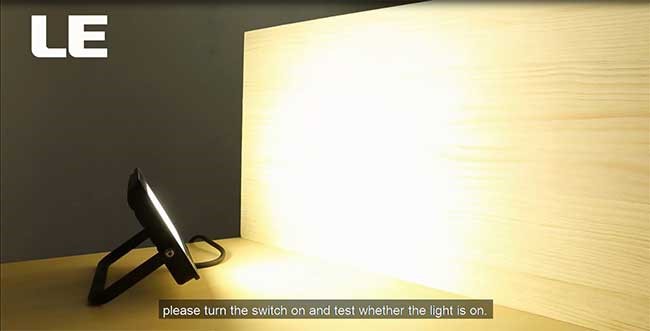
5 years warranty, Lifud Driver
Features:
1: 30/50/75/100/150/200/300W available.
2: 150/180LM/W available.
3: Bracket mounting, installation angle can be adjusted.
4: Wider range for beam angle: 15°/30°/60°/90°/120°.
5: Patented mold, integrated die-cast aluminum shell with good heat dissipation.

Main-Taunus-Zentrum (MTZ) is one of Germany’s oldest and largest shopping centers, located in Sulzbach,
near Frankfurt in the state of Hesse. Opened in 1964, MTZ is a pioneering example of modern shopping center
development in Germany, known for its open-air design and extensive retail offerings.

The Problem
MTZ wanted to upgrade their existing 400W Metal Halide Lamps in parking lot to provide an improvement
in the light levels of the exterior lighting, as well as reduce the energy consumption.
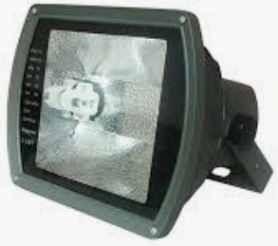
The Solution

The Results
Below pictures of the parking lot lighting where you can see the visual impact of the before and after images
of the LED conversion. Reapway LED Lighting helped to increase visibility for MTZ Shopping Center while reducing
their energy costs.
Total Energy Consumption (kWh) Savings: 123,4200 kWh over 8 years.
Total Electricity Cost Savings: $23449.8 over 8 years.
Electricity Saving Rate: 68.75%.
Brightness improvement: Increase 20 Lux to 50 Lux by 1.5 times

Customer testimonials
“We are extremely satisfied with the new LED flood lighting installed in our parking facility.
The brightness has significantly improved, enhancing the safety of vehicle movement throughout
the area. Not only have we seen a substantial reduction in energy consumption and electricity costs,
but we have also benefited from lower maintenance expenses for the lighting. This upgrade has truly
been a win-win for our shopping center. Thank you for the excellent service and high-quality products!”
Before:

After:
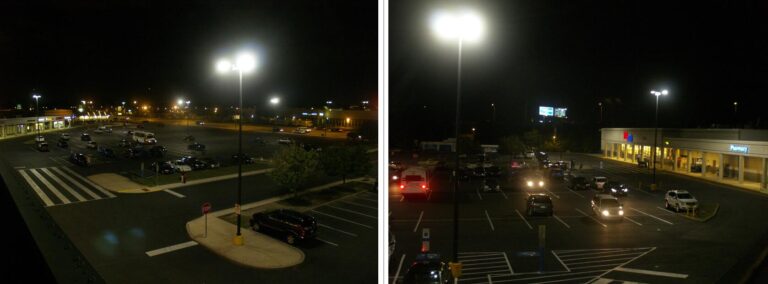
LED flood lights offer numerous advantages, including high energy efficiency, long lifespan, low maintenance cost,
and environmental benefits. They are a versatile and effective solution for various applications, from industrial
and commercial to security and landscape lighting. For more information or to discuss your specific lighting needs,
please contact us.

We will contact you within 1 working day, please pay attention to the email with the suffix “@reapway.com”.
Thank you for sharing this insightful article! I found the information really useful and thought-provoking. Your writing style is engaging, and it made the topic much easier to understand. Looking forward to reading more of your posts!
Thank you for positive feedbacks.
Thank you for reading our article!
We regularly share new insights and updates—stay connected by following our website for the latest content
and exploring our innovative LED lighting solutions.
You can also connect with me on linkedin and facebook:
https://www.linkedin.com/in/reapway/
https://www.facebook.com/Johnny180114
Thanks!
Johnny Chen
Reapway Technology Limited
Email: sales@reapway.com
Whatsapp: 0086-13728928716 Wechat: 0086-13728928716
Website: http://www.reapway.com
You actually make it seem really easy along with your presentation but I to find this topic to be actually one thing that I believe I might by no means understand. It sort of feels too complicated and very huge for me. I’m taking a look forward to your next put up, I?¦ll try to get the dangle of it!
Thank you for enjoying our article!
We regularly publish new content,feel free to follow our website for more updates and explore our LED lighting products.
Thanks!
Johnny Chen
Reapway Technology Limited
Email: sales@reapway.com
Whatsapp: 0086-13728928716
Website: http://www.reapway.com
What you’ve written here speaks not only to the mind but also to the soul, offering a sense of peace and understanding.
thank you.
Thank you for enjoying our article!
We regularly publish new content,feel free to follow our website for more updates and explore our LED lighting products.
Thanks!
Johnny Chen
Reapway Technology Limited
Email: sales@reapway.com
Whatsapp: 0086-13728928716
Website: http://www.reapway.com